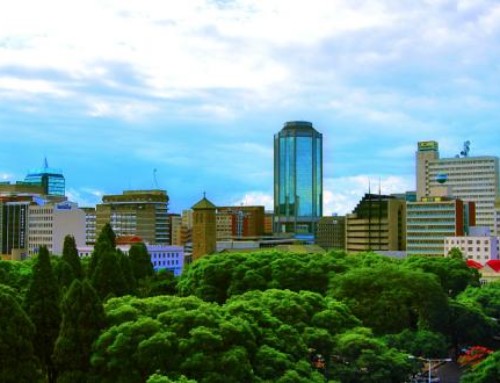
A weathered boulder. Image credit earthlearningidea.
ZIMSEC O Level Geography Notes: Weathering
- Earth movements (plate tectonics) create and lead to the development of the earth’s major landforms for example block mountains, volcanic cones, lava plateaus and rift valleys.
- As soon as they are formed denudation processes attack,expose and gradually wear these landforms away.
- Denudation is a term that is used to describe the forces that wear away the land surface it includes the processes of weathering, erosion, transportation and mass wasting.
Weathering
- Weathering refers to the weakening,breaking up, and disintegration of rocks that form the surface of the ground and lie exposed to the weather elements in situ.
- The little phrase in situ is a Latin phrase which simply means “in its original place” /”stationary.”
Examiners at ZIMSEC, Cambridge and other examining bodies often ask students to distinguish between weathering and erosion.
| Weathering | Erosion |
|---|---|
| Breaking down of rocks | Washing away of soil by either wind, water or ice. |
| Happens in situ (is static) | Washing away of top soil |
| Produces inselbergs and karst landscapes | Produces gullies and dongas |
| Caused mostly by temperature variances and acid rain (i.e there are two types chemical and mechanical) | Caused by the movement of water, wind and ice |
Mass wasting

Creep movement on a slope. Image credit Myschoolstuff.co.za
- is the movement of regolith and other weathered material en masse due to the force of gravity.
- It takes place in the form of mudslides and rock falls when a semi-liquid spongy mass falls down a slope as a single mass as opposed say to erosion when the soil and regolith is washed down the slope instead.
- Mass wasting includes such processes as creeping, soil and rock slides, topples and falls.
- It can take place at a slow almost imperceptible pace as in creep or quickly in the form of sudden rock falls and landslides.
- There are two types of weathering:
NB Aspects of biological weathering are either grouped as being physical or chemical depending with their nature, a criterion which ZIMSEC seems to favour at Ordinary Level.
Click on each title to learn about the different types of weathering.
To access more topics go to the Geography Notes page.







